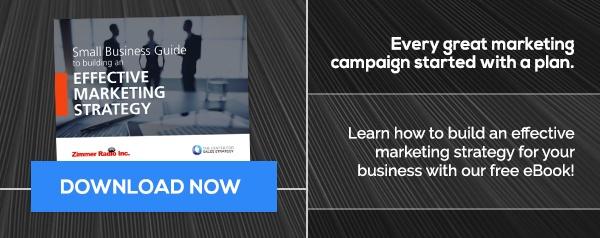 A successful advertising campaign requires a number of necessary elements to work in concert, but one that should never be overlooked is frequency. It’s the piece that brings your other elements together to truly influence your customers. There’s solid science behind why it works, but using frequency in advertising is also an art. Today’s post will offer a thorough overview of the art and science behind this incredibly important element.
A successful advertising campaign requires a number of necessary elements to work in concert, but one that should never be overlooked is frequency. It’s the piece that brings your other elements together to truly influence your customers. There’s solid science behind why it works, but using frequency in advertising is also an art. Today’s post will offer a thorough overview of the art and science behind this incredibly important element.
Why Frequency is Critical
You need the right message to have your audience do what you want them to, and you need to advertise on the right channels in order for them to receive that message. But being exposed to a particular marketing message once is extremely unlikely to result in a customer following through on your CTA. That’s where frequency comes in: by being exposed to your message repeatedly, your brand becomes a key contender throughout the buying process.
To begin with, frequency bolsters awareness through familiarity; your brand becomes recognizable. From there it helps to build interest in your products and message, especially if you maintain brand consistency, and that can help keep your brand at the forefront of consideration once the customer has recognized a need or desire that you provide a solution for. Frequency can also help your customer at their Zero Moment of Truth, becoming the very thing that spurs them to actually make a purchase. It can also be an important motivator after the purchase; assuming the customer is happy with the products and services you provide them, the frequency of your advertising can inspire them to make a referral.
But why does frequency levy this type of impact?
Psychological Support
Quite simply, frequency in advertising taps into how the human brain works. Multiple studies have been done to determine the most effective frequency needed to generate a response, and different schools of thought have formed around them. Namely, some theorize that being exposed to a message three times is enough to garner a response, while others suggest much higher numbers, like 13. While they disagree, the takeaway here is that consumer response will not be instantaneous. There are many underlying theories that support why this is the case, and we’ll touch on two.
One is the Mere-Exposure Effect. This describes the way people show preference or even favor for that which they are familiar. Essentially, repeated exposure breeds both brand awareness and familiarity. When the time comes to make a purchase decision, the customer will be more likely to choose the brand they’ve been exposed to more often. However, if you leverage what your audience is exposed to correctly, you can also engender trust and a level of knowledge that also helps you stand out above competitors that may otherwise be more familiar to them.
The other is the Baader-Meinhof phenomenon. Also called the frequency illusion, this combines selective attention focusing on something new (e.g., a customer notices your brand for the first time) to make it seem as though it’s everywhere (emphasized by the frequency of your advertising) and confirmation bias, which makes each time the customer is exposed to your product or message emphasize this sense of omnipresence.
The Two-Factor Theory, or “wear-in wear-out,” also bears mentioning. This describes two phases of how consumers respond to repetition. The first encompasses the positive benefits we’ve already discussed, but in the second, over exposure to a particular message or a specific ad begins to frustrate and annoy the customer and can actually impact their opinion of your brand and the choice to purchase negatively. This is precisely why the use of frequency in your marketing is an art.
Artistic Application to Advertising Strategy
There’s a fine line between the frequency you need to draw your audience along the path to purchase and bombarding them to the point of annoyance. Here are a few things to keep in mind:
- Know your target customer. — This is always going to be the first step when approaching any aspect of marketing. Knowing your audience allows you to recognize what the best frequency is going to be for them in particular, rather than consumers in general.
- Use the right channels. — Obviously, your marketing needs to be where your audience is, whether it’s Joplin radio advertising or paid social media. However, what you need to remember is that frequency gives you the means to effectively impact customers across channels as well.
- Plan ahead. — A marketing schedule is always going to help you be more effective, but it can also help you plan out the frequency for each campaign. Action campaigns may need a more intense frequency, while awareness campaigns need to last over longer periods of time.
- Budget with frequency in mind. — Because you’re planning a marketing schedule that includes frequency, you can develop a budget that allows you to maximize that frequency. It may be useful to build room into the budget to increase the frequency as needed.
- Utilize your media partners. — If you’re working with a media partner like Zimmer Radio, you should be taking advantage of their professional expertise. A partner like this can help you plan and budget for an advertising schedule across channels to make your campaign as effective as possible.
- Remember that advertising takes time. — One of the biggest things to take away from a lesson on frequency is that marketing takes time to have a real impact on your audience. Advertising is an investment that sees results over time, and expecting instantaneous results will only undermine your long-term goals.
Bonus Tips
Capitalize on On-Air Endorsements.
Radio hosts and DJs, as well as other personalities, are a major influence on their audiences. Taking advantage of the on-air endorsements can maximize your Joplin radio advertising frequency by leveraging the trust audiences put in their host of choice.
Use Social Media Retargeting
Digital promotions, like Facebook Ads, are already a strong way to create touchpoints with audiences. Social media platforms in general and Facebook specifically often offer retargeting options to capture audience attention based on their behavior. For instance, using the Facebook Pixel along with certain other advertising options allows you to serve a user personalized ads based on how they browsed your website.
Avoid Wear-Out with Ad Sequencing
Using frequency doesn’t necessarily require the repetition of a specific ad, although that is necessary to a point. Rather, you can repeat your message through similar images and themes by telling a story with sequential ads. Each ad can build on the one before it, enhancing trust and familiarity while sparking interest and encouraging consideration or conversion.
It’s vital to utilize frequency in advertising campaigns and strategies in order to make a lasting impact on your audience. The psychological basis is undeniable and incredibly useful, and the tips we’ve mentioned above will help you leverage it to your benefit. Of course, you don’t have to develop a strong plan for frequency alone. Tap into the resources at Zimmer Radio to achieve success in Joplin radio advertising and across all channels.

